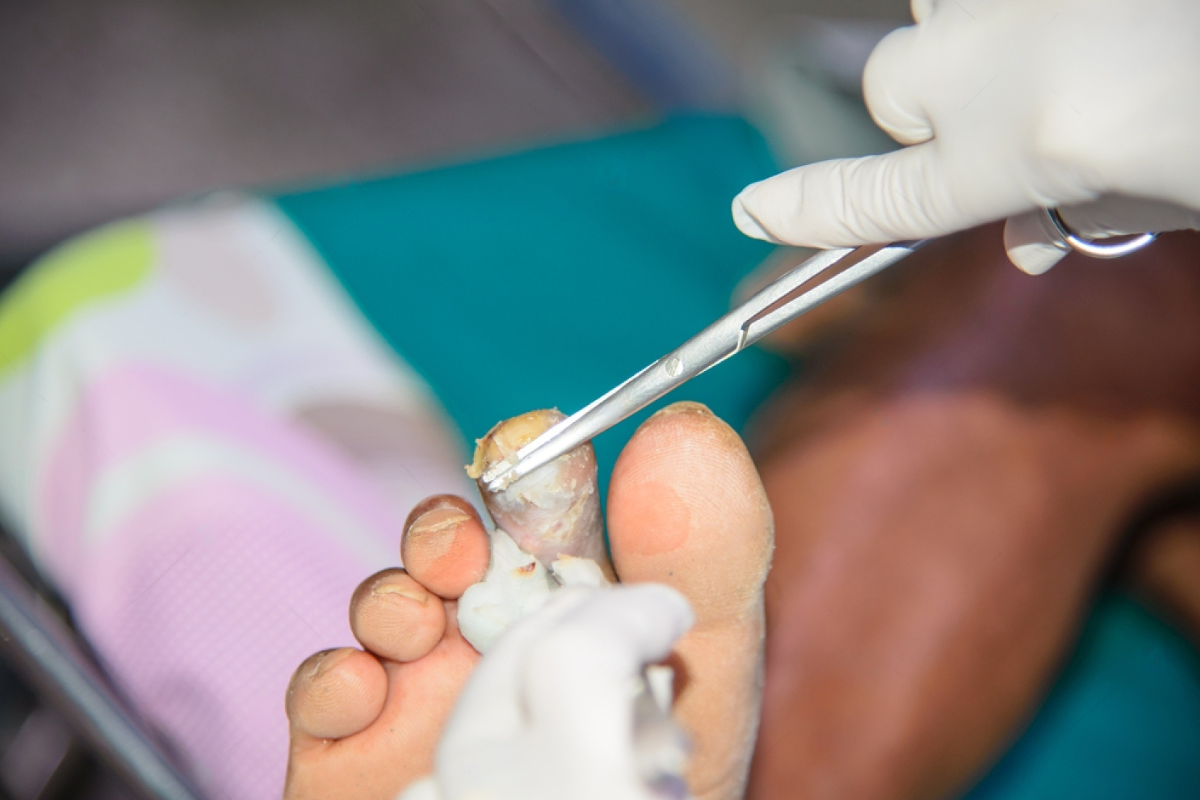Necrosis in the foot occurs when tissues die due to insufficient blood flow or severe infection. The condition can develop from uncontrolled diabetes, peripheral artery disease, infections, or trauma. Orthopedic treatment for necrotic foot is crucial because untreated necrosis can lead to infections spreading to surrounding areas, potentially threatening overall health. Risk factors such as smoking, obesity, and poor circulation increase susceptibility. Recognizing these risks and seeking timely orthopedic care can prevent severe complications. Patients who understand the causes and early signs of necrosis are better equipped to take proactive steps toward healing. Orthopedic specialists play a vital role in evaluating the condition and determining the most effective treatment approach.
Symptoms and Early Detection
Early recognition of necrotic foot is essential for effective orthopedic treatment. Common symptoms include discoloration, swelling, numbness, and a foul odor from the affected area. Persistent pain, changes in skin temperature, or slow-healing ulcers can also indicate necrosis. Differentiating between minor foot infections, diabetic ulcers, and necrotic tissue ensures timely intervention. High-risk individuals should perform regular foot inspections and monitor subtle changes such as tingling or color shifts. Prompt detection allows orthopedic specialists to implement non-surgical or minimally invasive treatments before the condition worsens. Early treatment with appropriate orthopedic interventions can prevent tissue loss and improve functional outcomes.
Diagnostic Procedures
Orthopedic treatment for necrotic foot begins with proper diagnosis. A detailed physical examination assesses tissue damage and blood flow. Imaging techniques like X-rays, MRIs, and CT scans help determine the extent of necrosis and whether bones are involved. Laboratory tests evaluate infection levels, circulation, and tissue viability. Accurate diagnostics allow doctors to decide if non-surgical measures are sufficient or if surgical intervention is required. Coordination between podiatrists, vascular surgeons, and orthopedic specialists ensures a comprehensive care plan. Timely and precise diagnosis greatly improves the chances of successful orthopedic treatment for necrotic foot.
Non-Surgical Orthopedic Treatment Options
Non-surgical orthopedic treatment for necrotic foot focuses on halting tissue death and promoting healing. Antibiotics treat underlying infections, while anti-inflammatory drugs reduce swelling. Pain management improves patient comfort and mobility. Proper wound care, including specialized dressings and topical therapies, supports tissue regeneration. Hyperbaric oxygen therapy can enhance oxygen delivery to compromised areas, particularly for patients with poor circulation. Lifestyle modifications such as controlling blood sugar, maintaining a healthy diet, and quitting smoking contribute to treatment success. Orthopedic specialists also recommend mobility adjustments and protective footwear to prevent further trauma. Non-surgical methods are most effective when necrosis is detected early and patients strictly follow medical guidance.
Surgical Approaches for Necrotic Foot
When necrosis is advanced or unresponsive to conservative methods, surgical orthopedic treatment becomes necessary. Debridement, which removes dead tissue, prevents infection from spreading and encourages healing. Revascularization procedures restore blood flow to affected areas, improving tissue survival. Severe cases may require partial or full amputation to protect the patient’s overall health. Post-surgery rehabilitation includes wound management, pain control, and a structured physical therapy program. Patients regain strength, balance, and mobility through targeted exercises. Orthopedic specialists create individualized recovery plans to preserve as much foot function as possible. Timely surgical intervention provides the best chance to prevent life-threatening complications.
Preventing Recurrence and Complications
Ongoing care is essential to prevent necrosis from recurring. Regular foot inspections help detect minor injuries or infections before they become serious. Protective footwear and customized orthotics reduce pressure points, support circulation, and prevent trauma. Managing chronic conditions such as diabetes, vascular disease, and high blood pressure is critical to maintaining foot health. A healthy lifestyle, including proper nutrition, hydration, and activity, promotes tissue resilience. Consistent follow-up visits with orthopedic specialists allow early intervention if symptoms reappear. Educating patients on proper foot care empowers them to take control of their health. Combining prevention strategies with orthopedic guidance ensures long-term healing and mobility.
Patient Support and Recovery
Recovery from necrotic foot extends beyond medical interventions to overall well-being. Pain management, through medications or therapy, improves comfort during healing. Physical therapy restores mobility, balance, and strength, allowing patients to resume daily activities. Emotional support is crucial because coping with necrosis and potential surgery can be stressful. Guidance on safe activity levels and adaptations reduces reinjury risk. Family members and caregivers support adherence to treatment plans. Holistic orthopedic care addresses both physical and mental health, ensuring better long-term outcomes. Monitoring and adjusting recovery plans as healing progresses improves quality of life and overall patient satisfaction.
FAQ
What is the first sign of necrotic foot?
Early signs often include skin discoloration, swelling, numbness, and coldness. Persistent pain or non-healing wounds may also indicate necrosis.
Can necrotic foot heal without surgery?
In early stages, non-surgical orthopedic treatment—such as antibiotics, wound care, and hyperbaric oxygen therapy—may prevent progression. Surgery is typically required when tissue death is severe.
How long does recovery take after surgical treatment?
Recovery varies depending on the procedure and overall health. Minor debridement may take a few weeks, while extensive surgery or amputation could require several months of rehabilitation.
Are there ways to prevent necrosis if I have diabetes?
Yes. Maintaining blood sugar control, performing regular foot inspections, wearing protective footwear, and seeking early treatment for injuries are key prevention strategies.
What specialists should be consulted for necrotic foot care?
Orthopedic specialists, podiatrists, vascular surgeons, and wound care experts collaborate to provide comprehensive treatment. Early consultation improves outcomes and preserves foot function.






